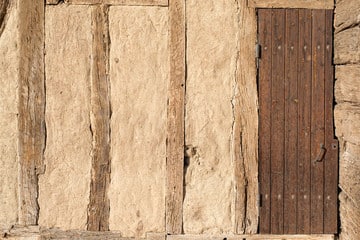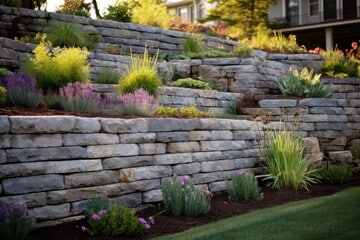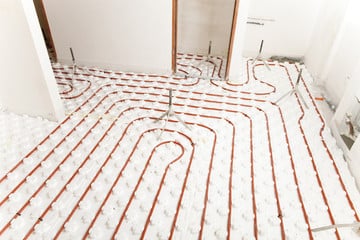Cob walls have long been a popular choice for home and building construction across the world. However, with the advent of modern materials and construction technologies, the practice of restoring these historic structures has fallen somewhat into neglect. In this article, we explore some of the most effective techniques for restoring cob walls, whilst preserving their heritage value and structural integrity.
Recognize the condition of the cob wall
To undertake an effective restoration, it is important to correctly assess the condition of the cob wall. Common signs of deterioration include sagging, cracks, excessive humidity and the presence of harmful insects. A careful inspection will allow you to identify the areas of greatest concern and choose the most suitable restoration techniques.
Identifying Moisture-Related Problems
When water comes into contact with the materials making up a cob wall, it can cause significant damage. It is essential to identify potential sources of moisture, such as water infiltration through roofs or floors, as well as lack of adequate drainage. Addressing these issues will be critical to ensuring the success of the restoration.
Choosing the Appropriate Restorative Materials
Choosing the right materials for the restoration of a cob wall is a key step. Care must be taken to use products compatible with original materials, in order to preserve the aesthetics and integrity of the wall. Among the essentials, we can cite:
- Clay or lime-based coating : respects the need for breathability of cob walls and ensures lasting protection against the elements;
- Plant or animal fibers : reinforce the structure while limiting the risk of cracks during drying;
- Terracotta or raw : constitutes a resistant and ecological material which blends perfectly with the existing cob.
Take traditional methods into account
To obtain a harmonious result and preserve the authenticity of the building, it is advisable to rely on traditional construction techniques suitable for cob. For example, using mud bricks rather than concrete blocks to consolidate certain strategic locations on the wall.
The key steps in restoring a cob wall
Restoring a cob wall requires a careful approach and specialist skills. Here are the main steps to follow:
1. Site preparation
Before starting work, it is essential to protect the surrounding surfaces and reinforce the fragile parts of the wall. This phase also includes checking the frame and addressing the moisture-related issues mentioned previously.
2. Repairing cracks and sagging
Filling cracks and straightening sagging portions are necessary to improve the stability of the cob wall. In some cases, additional structural elements (such as beams or wooden dowels) may be added to provide adequate support.
3. Application of a restoration coating
Once the repairs have been carried out, a clay or lime-based coating can be applied to the entire surface of the cob wall to provide lasting protection and renew its aesthetic appearance. It is important to respect gradual drying to avoid excessive stress on existing materials.
4. Finishes and embellishments
Finally, to complete the restoration, careful finishing work may be advisable. This may include using natural pigments to color the render, or carving decorative designs to beautify the wall and celebrate its traditional character.
The advantages of restoring cob walls
The preservation and restoration of these historic structures provides significant benefits. Among the main advantages, we can mention:
- Respect for cultural heritage : the promotion of these ancestral techniques contributes to preserving a rich architectural heritage;
- Ecological sustainability : the cob wall is a natural structure that requires few energy resources for its construction and maintenance;
- Thermal and hygrometric regulation : thanks to their composition, cob walls offer excellent interior comfort by filtering excess humidity and retaining heat when it is cold.
In short, the restoration of cob walls constitutes a virtuous investment for owners wishing to perpetuate the tradition while benefiting from a healthy and pleasant habitat to live in.







